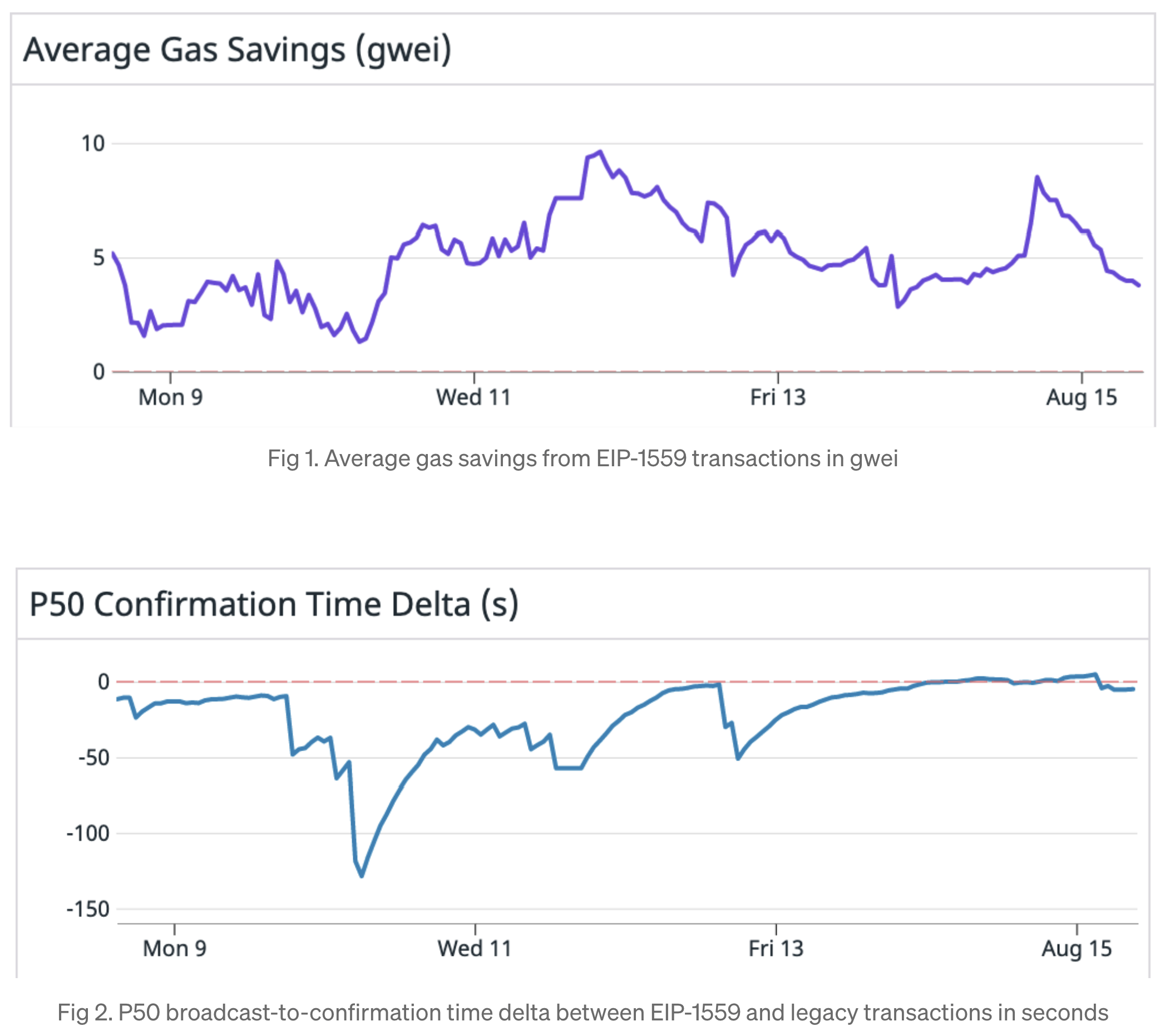Ethereum’s EIP-1559 Helped Coinbase Save ETH 27 on Daily Fees

It has long been known that Ethereum (ETH)’s “London” upgrade, which brought the much-anticipated EIP-1559, would help improve estimation of transaction fees on the network. But according to research from crypto exchange Coinbase, the upgrade has also brought more direct benefits for users, with the exchange so far saving about ETH 27 – or USD 92,000 – on gas fees every day.
After the implementation of the new Ethereum Improvement Proposal (EIP) on August 5 this year, Coinbase developed its own “novel gas pricing algorithm” for on-chain transactions that it makes, said a new blog post written by Yuga Cohler, a software engineer at the exchange.
According to him, it is this algorithm that allowed the exchange to compute an appropriate level for the max_priority_fee_per_gas – one of the two transaction fee values that EIP-1559 allows users to specify.
And as the change was rolled out by the exchange, results started to appear quickly:
“On average, we saved about 9% on effective gas prices,” Cohler wrote, adding that “we improved our broadcast-to-confirmation time by 11 seconds.”
Compared to the situation before EIP-1559 was implemented, Coinbase said their savings on transaction fees are about 27 ETH per day, worth around USD 92,000 at current prices.

Further, the Coinbase software engineer also noted that they believe the savings are likely to last thanks to the way the exchange makes the transactions:
“We suspect that we are able to simultaneously save on gas price and improve confirmation time because we specify a max_fee_per_gas that is significantly larger than the current base_fee_per_gas,” the Coinbase engineer further wrote, adding:
“This makes the effective priority_fee_per_gas larger than the equivalent legacy transaction, incentivizing miners to include our EIP-1559 transaction in the next block,” Cohler wrote.
Up until September 27 this year, transactions of ETH and other Ethereum-based tokens made by Coinbase and its users were responsible for burning a total of ETH 13,800, which comes out as an average daily burn of 254 ETH per day, the blog post said.
To take advantage of the large potential savings, Coinbase said it has rolled out EIP-1559 to 95% of transactions, while still holding back a few transactions on the legacy system in order to collect more data for comparison purposes.
Among other things, EIP-1559 introduced a mechanism that burns the largest part of the transaction fee – known as the base fee – paid by users, while a smaller part – the inclusion fee – is paid out to miners, thus making the supply of ETH more deflationary.
The upgrade has been warmly welcomed by ETH holders, and the price of ETH has so far risen by 25% since the burning mechanism was implemented. According to data from Watchtheburn.com, a total of ETH 451,561 (USD 1.6bn) has been burned as part of the mechanism thus far.
Altair mainnet upgrade on Ethereum
Meanwhile, the Ethereum Foundation on Tuesday announced that it is taking a further step towards the coming “Merge,” which is the nickname given to the network’s transition from proof-of-work to proof-of-stake.
According to the announcement, the Altair beacon chain upgrade is scheduled to be activated on the Ethereum mainnet in the morning (UTC time) of October 27, and validators on the Mainnet are “strongly recommended” to be online during the time of the upgrade.
The Altair beacon chain upgrade represents a “low stakes warm-up” for beacon chain developers and client teams ahead of the Merge, but will not impact ordinary end users of the network, the announcement said.
____
Learn more:
– DeversiFi Explains What Caused the USD 23M Transaction Fee on Ethereum
– Ethereum’s Hope No. 1559: What It Does and What It Doesn’t Do
– At Least 6,000 Coinbase Clients Robbed This Spring, Exchange Reimburses Losses
– US Watchdogs Send More Warning Signs to Altcoins & DeFi, But Coinbase Has a Plan




